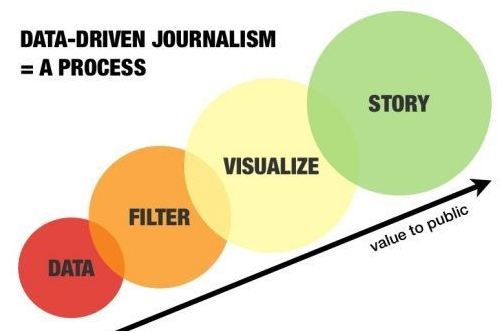In the changing face of journalism, locating statistics, analysing the data and reporting the findings has become common practice.
This week’s tutorial explored how the ease of accessing sources online and integrating this data into stories can assist journalists in their role of being a ‘watchdog of society’.
Student presenter Chris Daniel suggested by using data as opposed to “making educated guesses” as in the past, it can boost both the journalists’ credibility and the audience’s belief that the information presented is truthful.
A story published in the Australia Guardian carrying the headline, “Australian adults born after 1966 may not be fully protected against measles” used figures to show current confirmed cases. This was integrated with immunisation statistics.
Prof Peter Collignon, an infectious diseases expert from the Australian National University, claimed “if we have pockets of low immunisation then something highly infectious like measles will obviously spread to a lot more people”.
“Statistics back that up,” he said.
It was revealed Central Sydney had the lowest rate of full immunisation for five-year-olds, at only 70.5%.
Byron Bay was the third lowest, with 73.2%.
By using data, Prof Peter Collignon exposed that although the World Health Organisation declared that Australia had officially eradicated measles transmission, it was still prevalent. By presenting the data to the public, the facts added credibility and were used to highlight the need for improved rates of immunisation.
Source: https://www.youtube.com/watch?v=IBOhZn28TsE
In the video, Author and Editor of the Guardian Datablog, Simon Rogers, said the power of data journalism is not about “the existence of data, it’s not just attaining it and putting it out there, it’s the processing of working out what it tells you.”

Image Source: mediashilt.org
Through the use of data, print news organisations are not just confined to using text or a graphic. Incorporating statistics can increase the interactivity in stories and allow the audience to gain a greater understanding of the content.
The Sydney Morning Herald’s story, “How long have you got left,” includes an interactive life expectancy calculator to support the data. The figures provided from the Australian Bureau of Statistics add credibility and the use of visualised information helps improve audience engagement.
NBC News’ digital strategist Vivian Schiller believes “data is all things to all people”.
“The most important data is audience response that leads us to action,” she said.
In this regard, the data can act as an ‘unofficial’ activism.
References:
Australian Bureau of Statistics (2017) Statistics. Australian Government [available] http://www.abs.gov.au/ [accessed 15.10.2017]
Butt, C. and Frederiksen, S. (2017) How long have you got left? Find out with our life expectancy interactive. The Sydney Morning Herald Oct 19, 2017 [available] http://www.smh.com.au/national/how-long-have-you-got-left-find-out-with-out-life-expectancy-interactive-20171018-gz3av2.html [accessed 15.10.2017]
The Guardian (2013) What is data journalism at The Guardian? YouTube video [available] https://www.youtube.com/watch?v=IBOhZn28TsE [accessed 15.10.2017]
Heywood, A. et. al. (2008) Elimination of endemic measles transmission in Australia. World Health Organisation [available] http://www.who.int/bulletin/volumes/97/1/07-046375/en/ [accessed 14.10.2017]
McGowan, M. (2017) Australian adults born after 1966 may not be fully protected against measles. The Guardian [available[ https://www.theguardian.com/australia-news/2017/oct/04/australian-adults-born-after-1966-may-not-be-fully-protected-against-measles [accessed 13.10.2017]
Mediashift (2010) Data-driven journalism = a process. Image file [available] https://10.wp.com/mediashift.org/wp-content/uploads/2017/03/Data-driven_journalism_as_process-e1489422620906.jpg [accessed 15.10.2017]
Wenger, D. (2015) Journalism Done Audience First: Takeaways from Journalism Interactive 2015. Mediashift. [available] http://mediashift.org/2015/04/journalism-done-audience-first-takeaways-from-journalism-interactive-2015/ [accessed 15.10.2017]